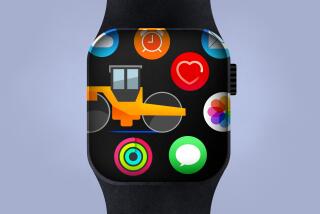How Jony Ive, Appleās design guru, planned his own obsolescence

Jonathan Ive led Appleās product design for decades, from the Technicolor iMac that revived the companyās fortunes in the late ā90s to the softly minimalist iPhone that turned Apple into one of the worldās largest companies.
For nearly half that time, heās been trying to leave.
As early as 2007, when the chubby original iPhone was first being assembled in Shenzhen, China, Ive, who goes by Jony, was contemplating an early retirement to a 17th century mansion in the west of England, where he could tinker with the occasional luxury product while being close to his family.
The incredible success of the iPhone, combined with the terminal illness of former Apple Chief Executive Steve Jobs, forced Ive to put those plans on hold. Instead of disappearing into the countryside, he ascended, succeeding Jobs as Appleās top product visionary and the enforcer of its unique aesthetic, which seeks to pare away all but whatās essential.
Since 2015, following the debut of the Apple Watch ā one of his signature products, especially in its ultra-luxe iterations ā Ive had been dialing down his involvement in the company. He gave up day-to-day managerial duties, increasingly held meetings near his San Francisco home rather than make the trek down the peninsula to Cupertino, and devoted his energy toward seeing Apple Park ā the perfectly circular spaceship of a headquarters that he had conceived with Jobs ā through to completion.
When he announced his complete departure from Apple on Thursday, along with plans to open a new design firm, LoveFrom, with Marc Newson, the companyās stock dipped. But it didnāt nosedive in the way Ive fretted about, pondering his eventual exit in a 2015 New Yorker profile.
The marketās nonchalance would have been unthinkable even five years ago, when Apple was still a company known for its category-defining product launches polished to perfection by Iveās design team. Ive, whose design discipline was all about stripping away the unnecessary to reach the essential, had succeeded in making himself superfluous.
āI donāt think anybody is surprised by it,ā Yves Behar, founder of Fuseproject, a prominent Silicon Valley design firm, said. āApple has a great team and a great culture that will endure. I have a lot of trust in their ability to continue in the fashion theyāve been designing in for the last 20 years.ā
But the next 20 years are likely to look very different for Apple, for reasons that have nothing to do with Iveās leaving, although they help to explain its timing.
Today, the pace of hardware innovation has slowed and updates to the iPhone are only incremental. Some 900 million of its smartphones are in circulation, along with another 500 million of its other devices. As Apple Chief Executive Tim Cook increasingly focuses on delivering better software to keep those customers inside its ecosystem, rather than luring in new ones with another āone more thingā device launch, an industrial design deity like Ive has become less and less relevant to the companyās bottom line.
āIf Tim Cook left tomorrow that would be a problem,ā said Gene Munster, a longtime Apple observer and managing partner at Loup Ventures. āEven though you could talk about Tim Cook and Jony Ive in the same sentence, for the last few years theyāve made very different contributions ā Cook is someone who is actively involved, versus someone who has been evolving out of their role.ā
Ive entered the computer consumerās consciousness with the debut of the candy-colored iMacs in 1998, after Jobs returned to the company and found him toiling in obscurity on Appleās campus, sitting on a sheaf of good ideas. At the time, Apple seemed like a has-been, a maker of niche products for nerds who disdained the corporate hegemony of Microsoft but didnāt want to learn enough about computers to build their own open-source machines from scratch.
The iMac marked the companyās return to prominence and Iveās ascent to the top of Appleās org chart, where he became a close collaborator with the famously dictatorial Jobs. When Jon Rubenstein, then the head of Appleās hardware engineering, convened a team to build a portable music player out of new hard drive technology, Ive was in place to hone the iPodās milky surface and shine its metallic back.
Crucially, according to Brian Merchant, author of āThe One Device: The Secret History of the iPhone,ā Ive used his institutional clout to give two user interface designers who were working on touchscreen prototypes in the early 2000s, Imran Chaudhri and Bas Ording, room to experiment.
Ive possessed a genius for taking the fruits of Appleās R&D skunk works and turning them into things that even un-techie consumers yearned to hold in their hands. Possessing some of the same traits as Jobs, he was a natural figurehead after the latterās death from pancreatic cancer. Just as Jobs had his famed āreality distortion field,ā Ivesā aura acquired a life of its own.
āJony Ive gets a lot of credit for polishing up the laptops, the iPod, the iPhone, the iPad, when a lot of that credit belongs to the software designers who really made them easy to use,ā Merchant said. āI think most of the products would have still succeeded if the software was just as good. Another industrial designer at the time maybe wouldnāt have given it quite as much polish, but thereās a really good chance the iPhone would have succeeded on the same level.ā
His eye for sleek designs optimized for low weights and slim profiles led him to seal his products up, denying consumers the ability to easily replace batteries or update components as technology changed.
That aesthetic impulse dovetailed nicely with a business model based on frequent upgrades. It was the same bias that led Ive to advocate for killing the standard headphone jack in Apple devices from Day One, just for the sake of reducing the number of ports on the devices ā even if that meant, as it does today, that consumers need to purchase Apple-only sets of headphones just to use their devices.
Iveās era as Appleās leading product thinker overlapped with the apex of the silicon eraās trend toward miniaturization, giving his team the tools to create increasingly sleek objects without sacrificing computing power or battery life. For decades, thanks to the shrinking size of transistors, microchips had been doubling in processing power roughly every two years, a phenomenon defined by Mooreās Law, named after Intel co-founder Gordon Moore. That allowed device makers like Apple to make successive generations of smartphones radically better without making them larger or more expensive.
But physics limits how small transistors can be. By the time of Jobsās death in 2011, chip makers were running up against those limits. The end of Mooreās Law, as a 2018 paper in Nature declared, ushered in āpeak iPhoneā as Apple struggled, for the first time, to persuade its customers to upgrade to newer models that offered only incremental improvements. The same limitation now hangs over Appleās efforts to make its watch a must-have accessory and to develop augmented-reality glasses that are more than a novelty item.
With hardware getting harder, the focus of technological innovation has shifted to machine learning-based software running on vast server farms in the cloud, rather than individual devices. In smart homes and cars, increasingly the battlefield for tech giants like Apple, Google and Amazon, voice interfaces are more central than the tactile-visual interfaces Ive excelled in. A fan of Rolexes and Bentleys, Ive championed a $17,000 version of the Apple Watch and the $1,000 iPhone X, but thereās no place for ultra-luxury flourishes in digital subscriptions or streaming media, two venues where Apple is ramping up its efforts.
No wonder, then, Ive picked this moment to step away. His new firm, LoveFrom, will have Apple as a client, but Apple no longer needs him like it did. Once Ive stopped being essential, per his own paramount rule, it was time for him to disappear.
Follow me on Twitter: @samaugustdean







